A Study on a Spacelike Line Trajectory in Lorentzian Locomotions
Abstract
:1. Introduction
2. Preliminaries
Lorentzian Dual Spherical Locomotion
3. Spacelike Lines with Special Trajectories
3.1. Disteli Formulae for a Spacelike Line Trajectory
3.2. Spacelike Torsion Line Congruence
3.3. Line Geometry of the Spacelike Torsion Line Congruence
- (1)
- (2)
- (3)
4. Conclusions
Author Contributions
Funding
Data Availability Statement
Acknowledgments
Conflicts of Interest
References
- Bottema, O.; Roth, B. Theoretical Kinematics; North-Holland Press: New York, NY, USA, 1979. [Google Scholar]
- Karger, A.; Novak, J. Space Kinematics and Lie Groups; Gordon and Breach Science Publishers: New York, NY, USA, 1985. [Google Scholar]
- Schaaf, J.A. Curvature Theory of Line Trajectories in Spatial Kinematics. Ph.D. Thesis, University of California, Davis, CA, USA, 1988. [Google Scholar]
- Stachel, H. Instantaneous Spatial Kinematics and the Invariants of the Axodes; Technical Report; Institute fur Geometrie, TU Wien: Wien, Austria, 1996. [Google Scholar]
- Pottman, H.; Wallner, J. Computational Line Geometry; Springer: Berlin/Heidelberg, Germany, 2001. [Google Scholar]
- Garnier, R. Cours de Cinématique, Tome II: Roulement et Vibration-La Formule de Savary et son Extension a l’Espace; Gauthier-Villars: Paris, France, 1956. [Google Scholar]
- Phillips, J.; Hunt, K. On the theorem of three axes in the spatial motion of three bodies. J. Appl. Sci. 1964, 15, 267–287. [Google Scholar]
- Skreiner, M. A study of the geometry and the kinematics of Instantaneous spatial motion. J. Mech. 1966, 1, 115–1439. [Google Scholar] [CrossRef]
- Dizioglu, B. Einfacbe Herleitung der Euler-Savaryschen Konstruktion der riiumlichen Bewegung. Mech. Mach. Theory 1974, 9, 247–254. [Google Scholar] [CrossRef]
- Abdel-Baky, R.A.; Al-Solamy, F.R. A new geometrical approach to one-parameter spatial motion. J. Eng. Math. 2008, 60, 149–172. [Google Scholar] [CrossRef]
- Sprott, K.; Ravani, B. Cylindrical milling of ruled surfaces. Int. J. Adv. Manuf. Technol. 2008, 38, 649–656. [Google Scholar] [CrossRef]
- Figliolini, G.; Stachel, H.; Angeles, J. The Computational fundamentals of spatial cycloidal gearing. In Computational Kinematics, Proceedings of the 5th International Workshop on Computational Kinematics; Kecskeméthy, A., Müller, A., Eds.; Springer: Berlin/Heidelberg, Germany, 2009; pp. 375–384. [Google Scholar]
- Abdel-Baky, R.A.; Al-Ghefari, R.A. On the one-parameter dual spherical motions. Comput. Aided Geom. Des. 2011, 28, 23–37. [Google Scholar] [CrossRef]
- Al-Ghefari, R.A.; Abdel-Baky, R.A. Kinematic geometry of a line trajectory in spatial motion. J. Mech. Sci. Technol. 2015, 29, 3597–3608. [Google Scholar] [CrossRef]
- Abdel-Baky, R.A. On the curvature theory of a line trajectory in spatial kinematics. Commun. Korean Math. Soc. 2019, 34, 333–349. [Google Scholar]
- Gungor, M.A.; Ersoy, S.; Tosun, M. Dual Lorentzian spherical movements and dual Euler-Savary formula. Eur. J. Mech.-A/Solids 2009, 28, 820–826. [Google Scholar] [CrossRef]
- Ayyilidiz, N.; Yalin, S.N. On instantaneous invariants in dual Lorentzian space kinematics. Arch. Mech. 2010, 62, 223–238. [Google Scholar]
- Zhang, X.; Zhang, J.; Pang, B.; Zhao, W. An accurate prediction method of cutting forces in 5-axis flank milling of sculptured surface. Int. J. Mach. Tools Manuf. 2016, 104, 26–36. [Google Scholar] [CrossRef]
- Calleja, A.; Bo, P.; Gonzalez, H.; Barton, M.; Norberto, L.; de Lacalle, L. Highly accurate 5-axis flank CNC machining with conical tools. Int. J. Adv. Manuf. Technol. 2018, 97, 1605–1615. [Google Scholar] [CrossRef]
- Gonzãlez, H.; Pereira, O.; López de Lacalle, L.N.; Calleja, A.; Ayesta, I.; Munoxax, J. Flank-Milling of Integral Blade Rotors Made in Ti6Al4V Using Cryo CO2 and Minimum Quantity Lubrication. J. Manuf. Sci. Eng. 2021, 143, 091011-2. [Google Scholar] [CrossRef]
- Hamdi, M.; Aifaoui, N.; Abdelmajid, B. Idealization of cadgeometry using design and analysis integration features models. In Proceedings of the ICED 2007, the 16th International Conference on Engineering Design, Paris, France, 28–31 July 2007. [Google Scholar]
- Rezayat, M. Midsurface abstraction from 3d solid models: General theory and applications. Comput. Aided Des. 1996, 28, 905–915. [Google Scholar] [CrossRef]
- Ferhat, T.; Abdel-Baky, R.A. On a spacelike line congruence which has the parameter ruled surfaces as principal ruled surfaces. Int. Electron. J. Geom. 2019, 12, 135–143. [Google Scholar]
- Abdel-Baky, R.A.; Unluturk, Y. A new construction of timelike ruled surfaces with constant Disteli-axis. Honam Math. J. 2020, 42, 551–568. [Google Scholar] [CrossRef]
- Alluhaibi, N.; Abdel-Baky, R.A. On the one-parameter Lorentzian spatial motions. Int. J. Geom. Methods Mod. Phys. 2019, 16, 1950197. [Google Scholar] [CrossRef]
- Alluhaibi, N.; Abdel-Baky, R.A. On the kinematic-geometry of one-parameter Lorentzian spatial movement. Int. J. Adv. Manuf. Technol. 2022, 121, 7721–7731. [Google Scholar] [CrossRef]
- O’Neil, B. Semi-Riemannian Geometry Geometry, with Applications to Relativity; Academic Press: New York, NY, USA, 1983. [Google Scholar]
- Walfare, J. Curves and Surfaces in Minkowski Space. Ph.D. Thesis, K.U. Leuven, Faculty of Science, Leuven, Belgium, 1995. [Google Scholar]
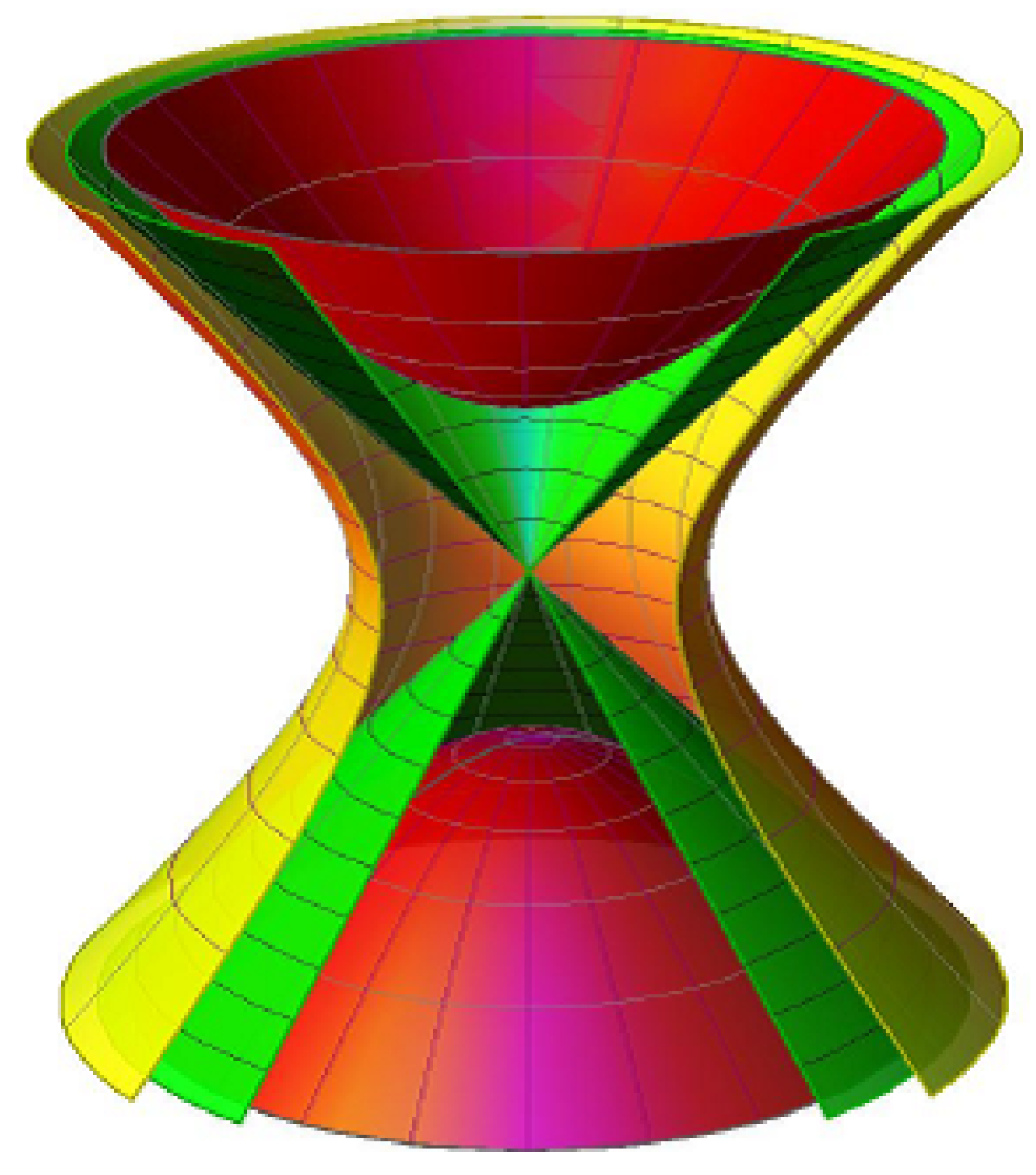
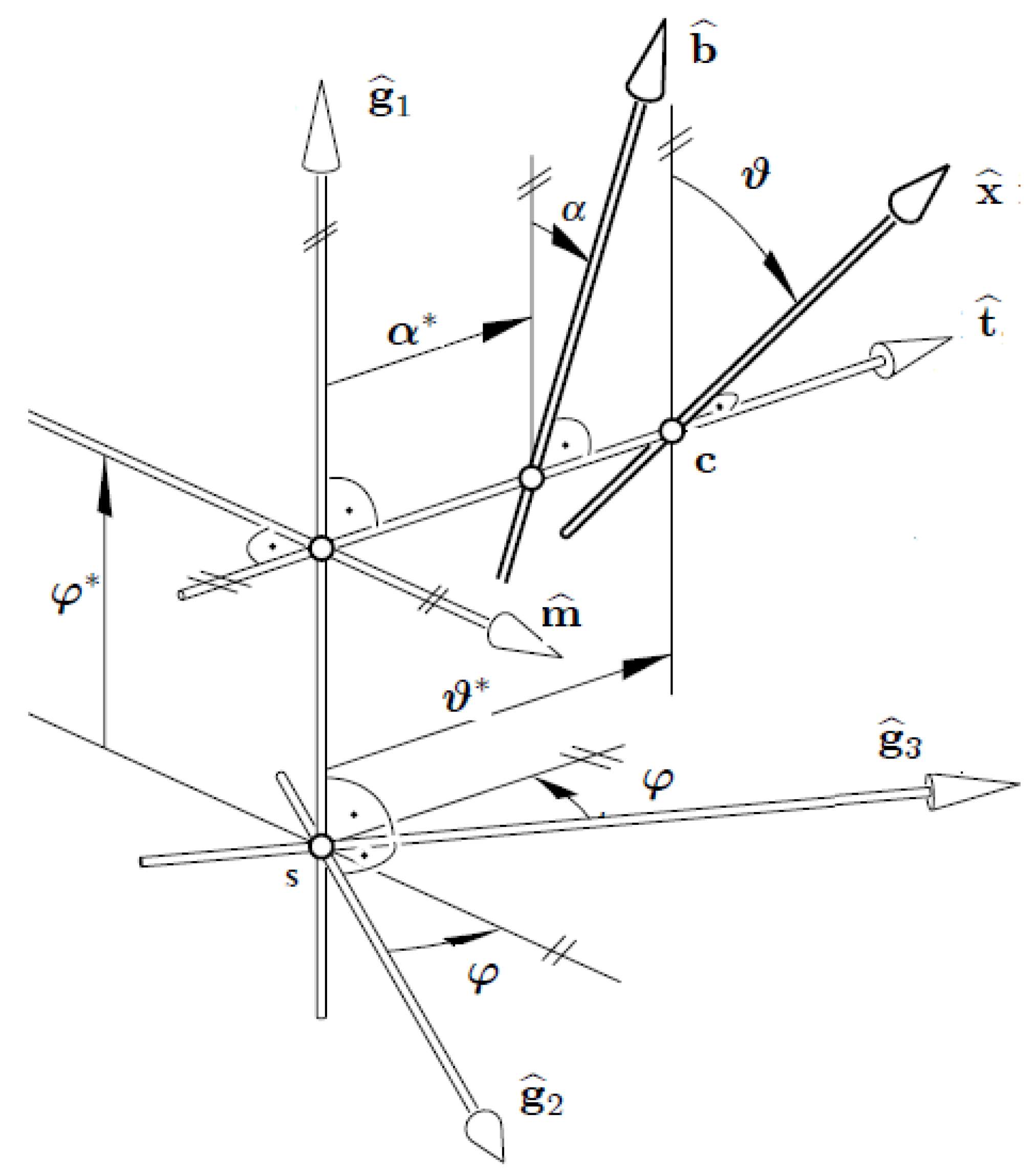

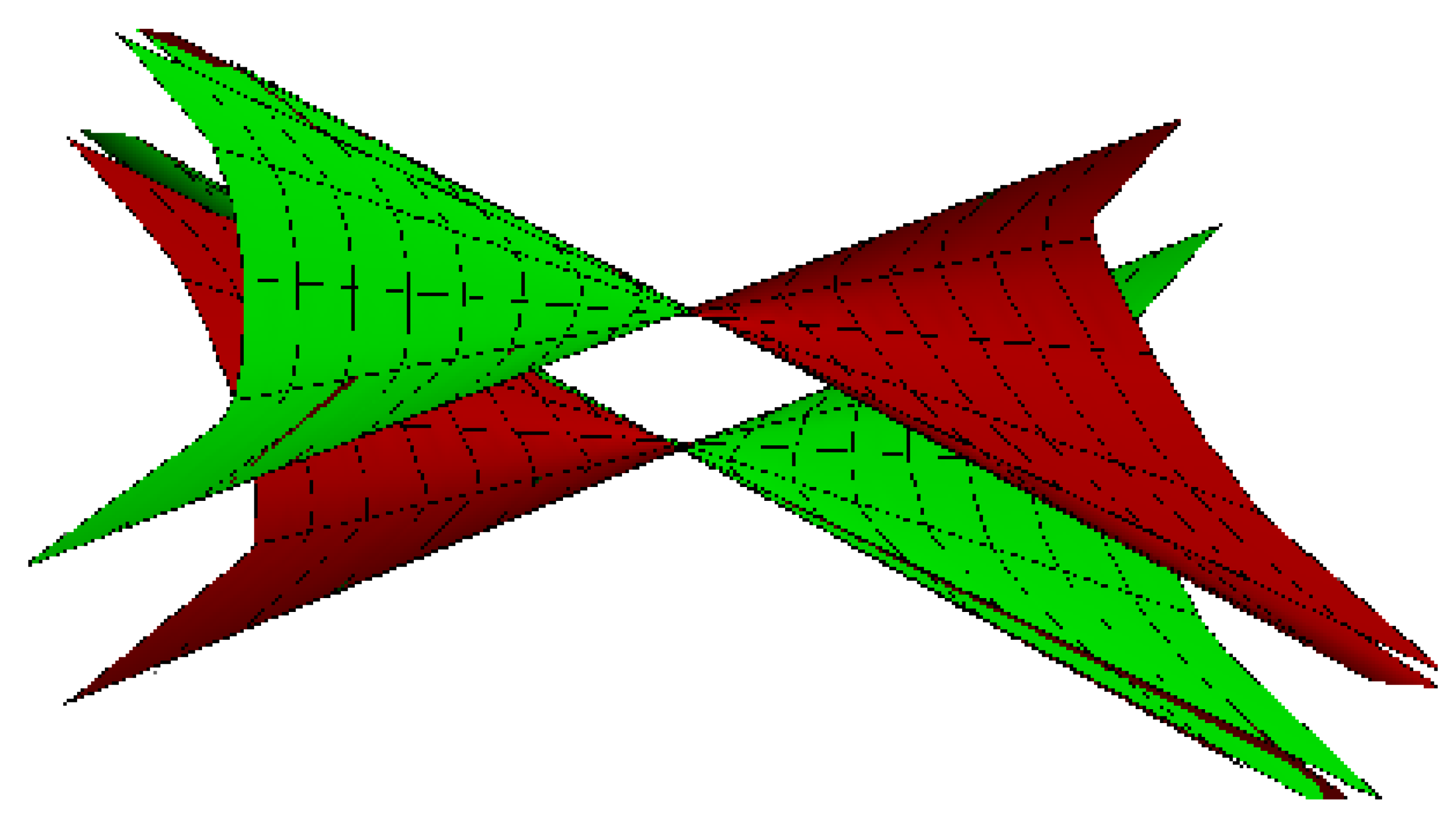
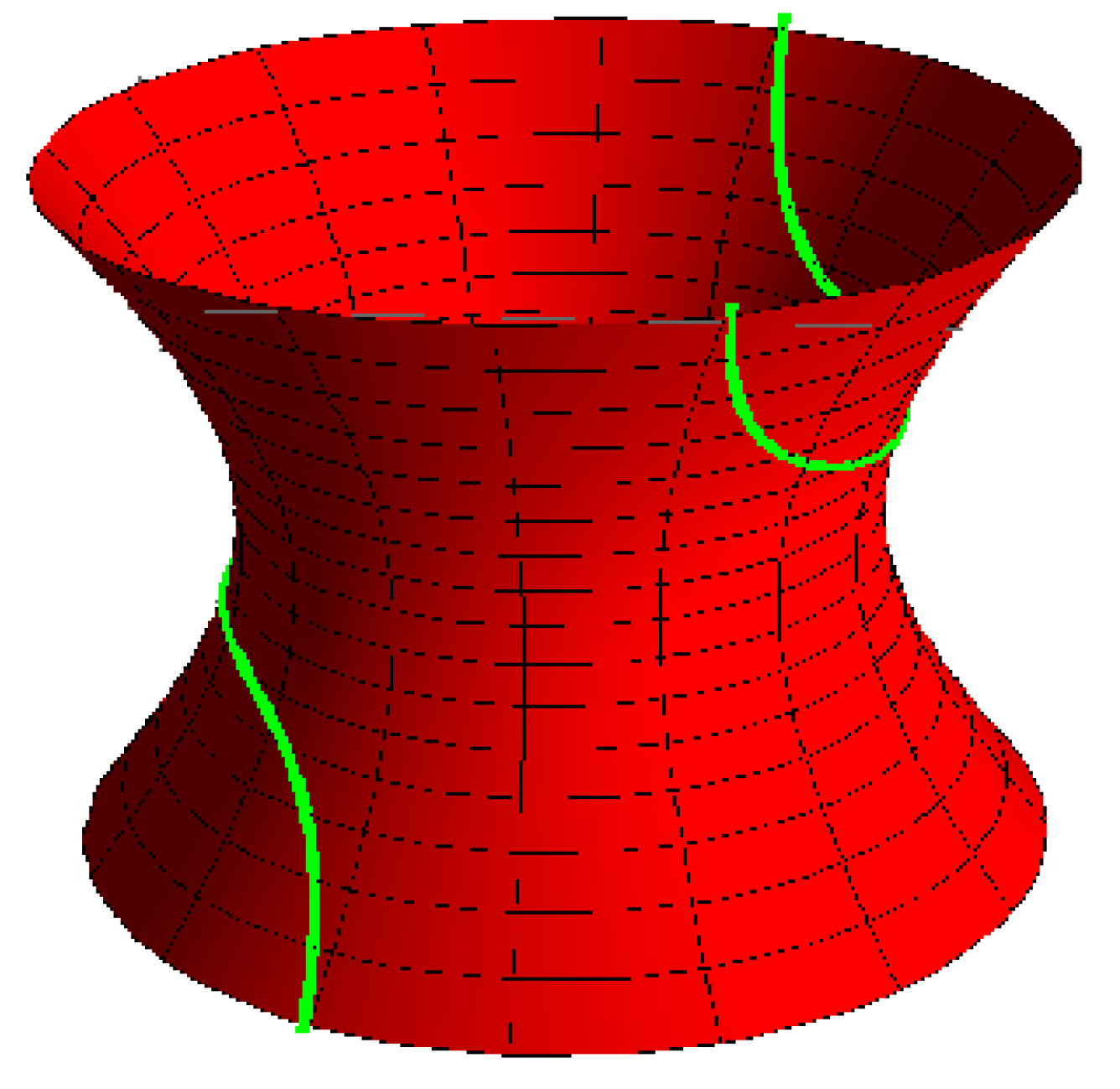
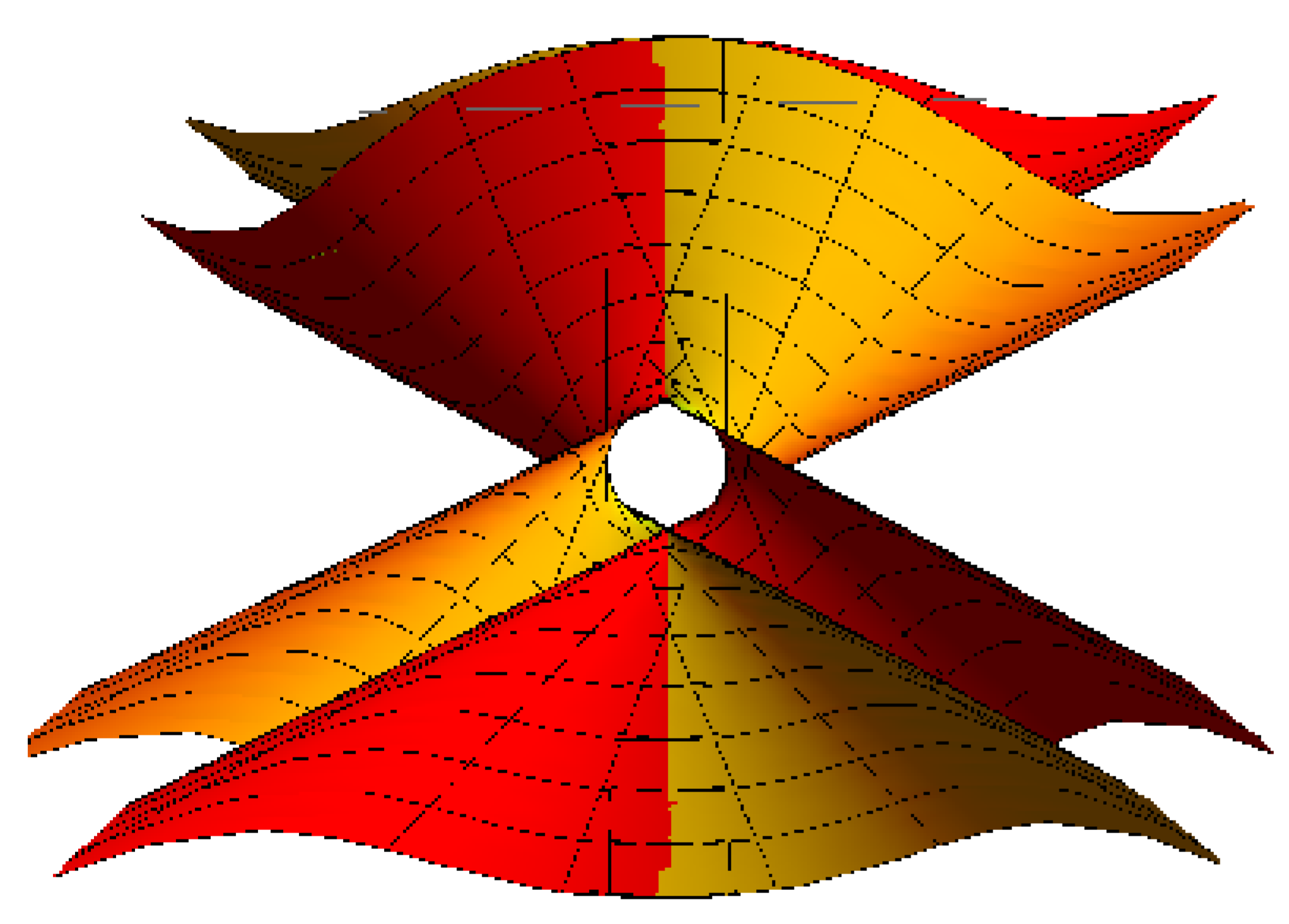
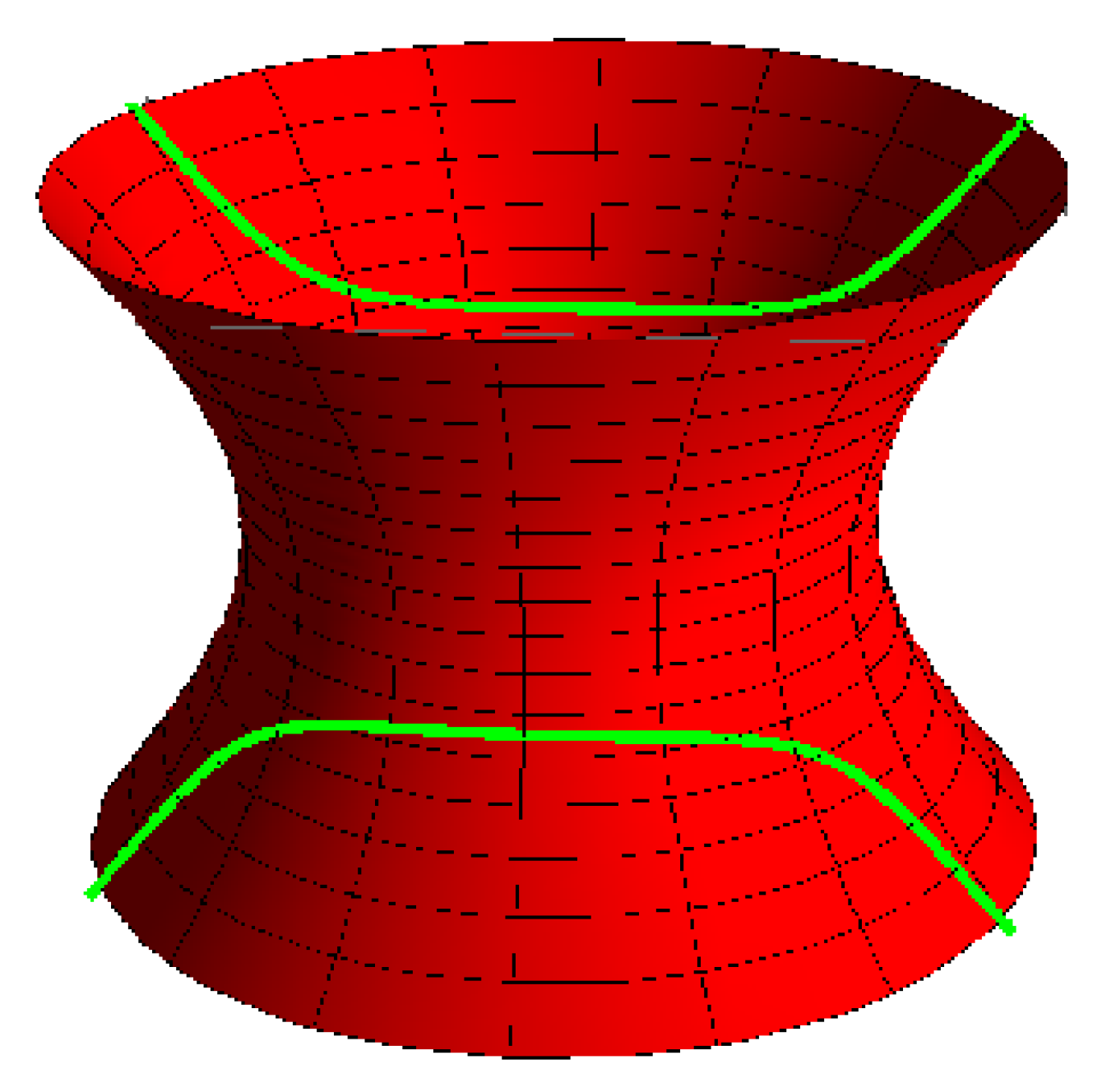
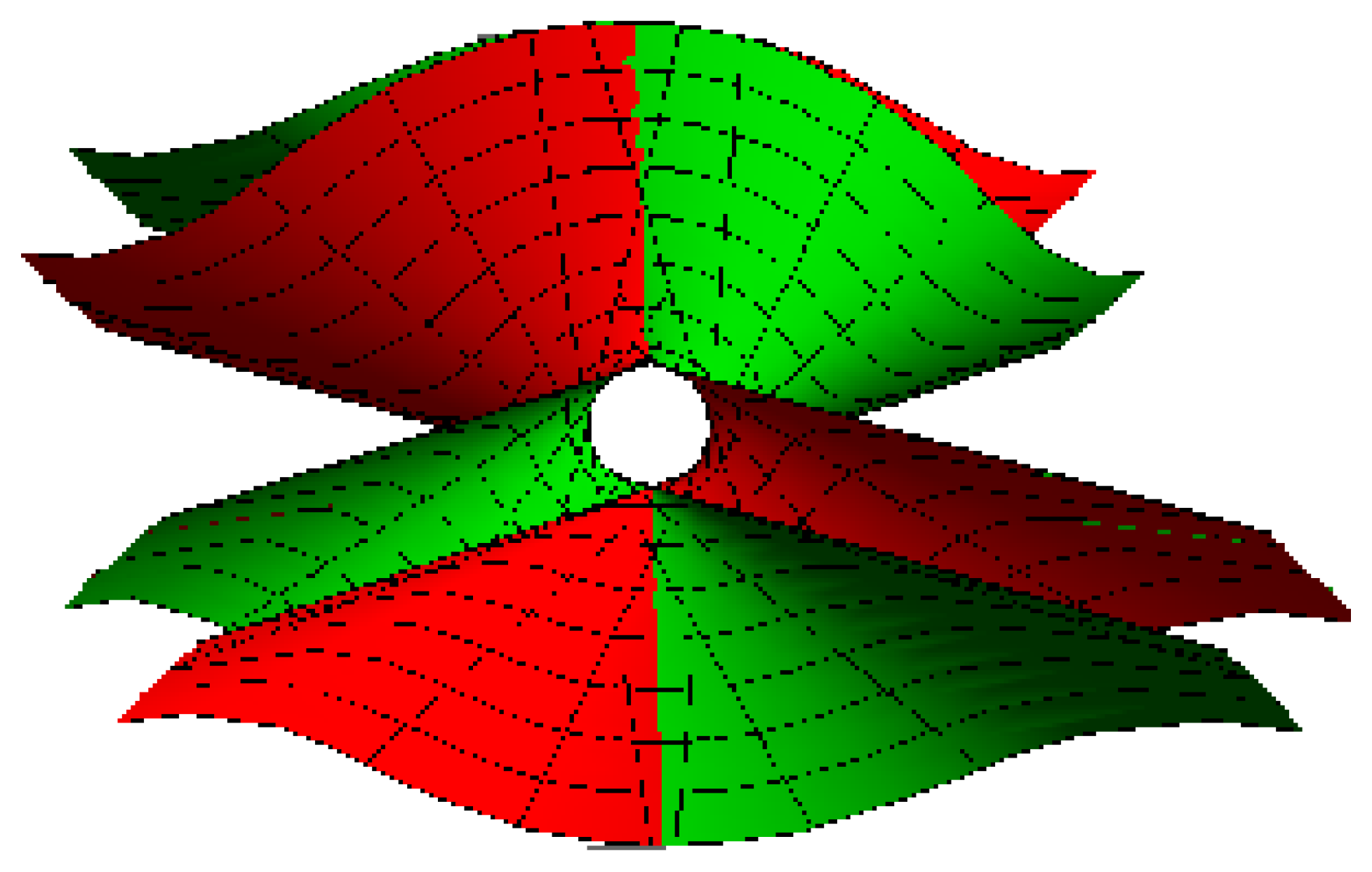
Disclaimer/Publisher’s Note: The statements, opinions and data contained in all publications are solely those of the individual author(s) and contributor(s) and not of MDPI and/or the editor(s). MDPI and/or the editor(s) disclaim responsibility for any injury to people or property resulting from any ideas, methods, instructions or products referred to in the content. |
© 2023 by the authors. Licensee MDPI, Basel, Switzerland. This article is an open access article distributed under the terms and conditions of the Creative Commons Attribution (CC BY) license (https://creativecommons.org/licenses/by/4.0/).
Share and Cite
Almoneef, A.A.; Abdel-Baky, R.A. A Study on a Spacelike Line Trajectory in Lorentzian Locomotions. Symmetry 2023, 15, 1816. https://doi.org/10.3390/sym15101816
Almoneef AA, Abdel-Baky RA. A Study on a Spacelike Line Trajectory in Lorentzian Locomotions. Symmetry. 2023; 15(10):1816. https://doi.org/10.3390/sym15101816
Chicago/Turabian StyleAlmoneef, Areej A., and Rashad A. Abdel-Baky. 2023. "A Study on a Spacelike Line Trajectory in Lorentzian Locomotions" Symmetry 15, no. 10: 1816. https://doi.org/10.3390/sym15101816
APA StyleAlmoneef, A. A., & Abdel-Baky, R. A. (2023). A Study on a Spacelike Line Trajectory in Lorentzian Locomotions. Symmetry, 15(10), 1816. https://doi.org/10.3390/sym15101816




